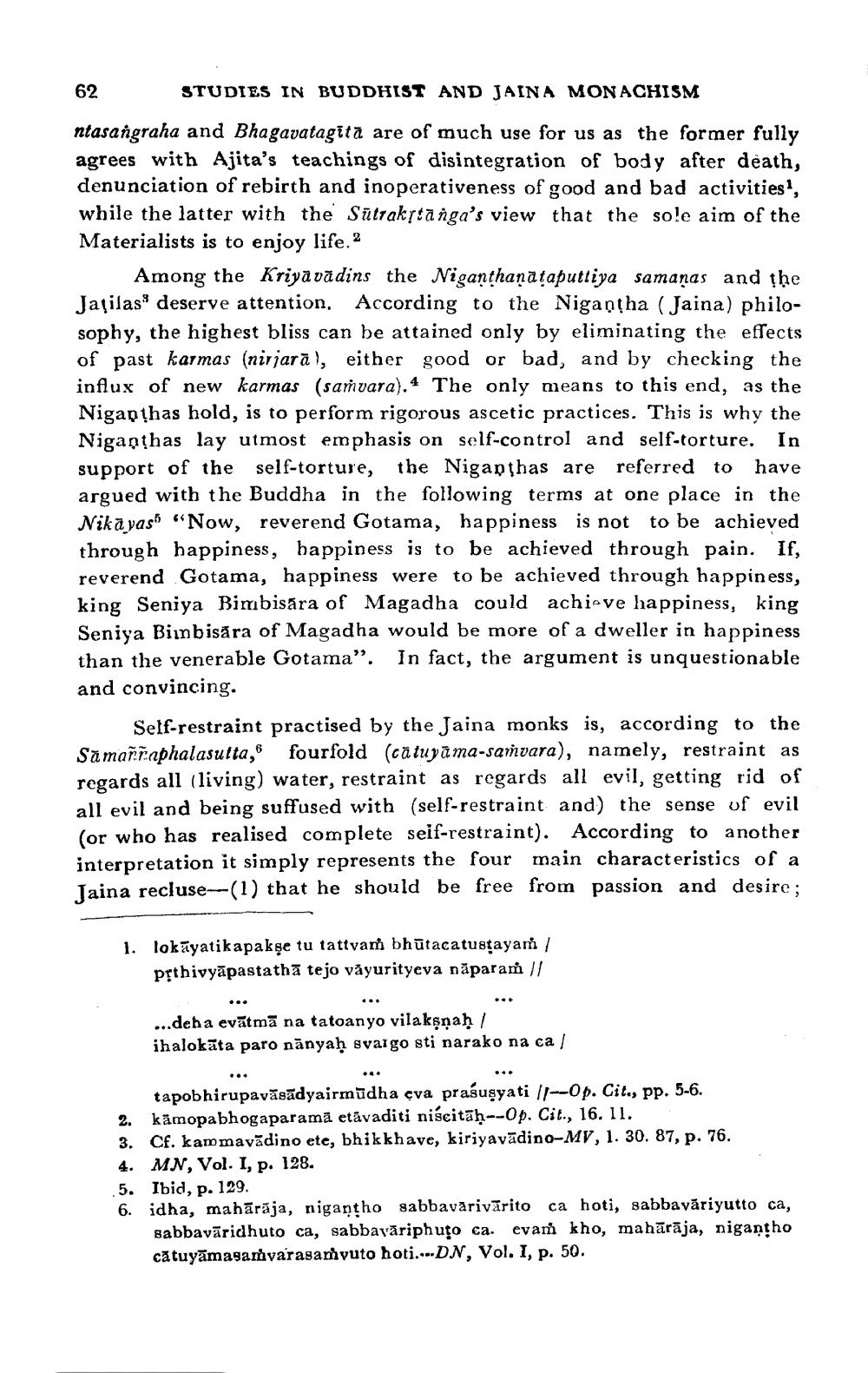________________
62
STUDIES IN BUDDHIST AND JAINA MONACHISM
ntasangraha and Bhagavatagita are of much use for us as the former fully agrees with Ajita's teachings of disintegration of body after death, denunciation of rebirth and inoperativeness of good and bad activities, while the latter with the Sūtrakyta nga's view that the sole aim of the Materialists is to enjoy life.”
Among the Kriyavādins the Niganthanataputtiya samaņas and the Jațilas deserve attention. According to the Nigantha (Jaina) philosophy, the highest bliss can be attained only by eliminating the effects
karmas (nirjara!, either good or bad, and by checking the influx of new karmas (samvara).4 The only means to this end, as the Nigapthas hold, is to perform rigorous ascetic practices. This is why the Niganthas lay utmost emphasis on self-control and self-torture. In support of the self-torture, the Nigapthas are referred to have argued with the Buddha in the following terms at one place in the Nika yass “Now, reverend Gotama, happiness is not to be achieved through happiness, happiness is to be achieved through pain. If, reverend Gotama, happiness were to be achieved through happiness, king Seniya Bimbisára of Magadha could achieve happiness, king Seniva Biinbisära of Magadha would be more of a dweller in happiness than the venerable Gotama". In fact, the argument is unquestionable and convincing.
Self-restraint practised by the Jaina monks is, according to the Să mañiaphalasutta,6 fourfold (catuyama-samvara), namely, restraint as regards all (living) water, restraint as regards all evil, getting rid of all evil and being suffused with (self-restraint and) the sense of evil (or who has realised complete seif-restraint). According to another interpretation it simply represents the four main characteristics of a Taina recluse-(1) that he should be free from passion and desire:
1. lokāyatikapakşe tu tattvani bhūtacatustayam /
prthivyāpastathā tejo väyurityeva näparan //
.
..
...deha evātmā na tatoanyo vilaksnaḥ ihalokāta paro nānyaḥ svaigo sti narako na ca
tapobhirupavāsādyairmūdha cva praśuşyati ||--Op. cit., pp. 5-6. 2. kāmopabhogaparama etāvaditi niścitāḥ--Op. cit., 16. 11.
Cf. kam mavādino ete, bhikkhave, kiriyavādino-MV, 1. 30. 87, p. 76. 4. MN, Vol. I, p. 128.
Ibid, p. 129. 6. idha, mahārāja, nigantho sabbavārivārito ca hoti, sabbavāriyutto ca,
Babbavāridhuto ca, sabbavāriphuto ca. evam kho, mahārāja, nigantho cătuyāmasamvarasamvuto hoti...DN, Vol. I, p. 50.




